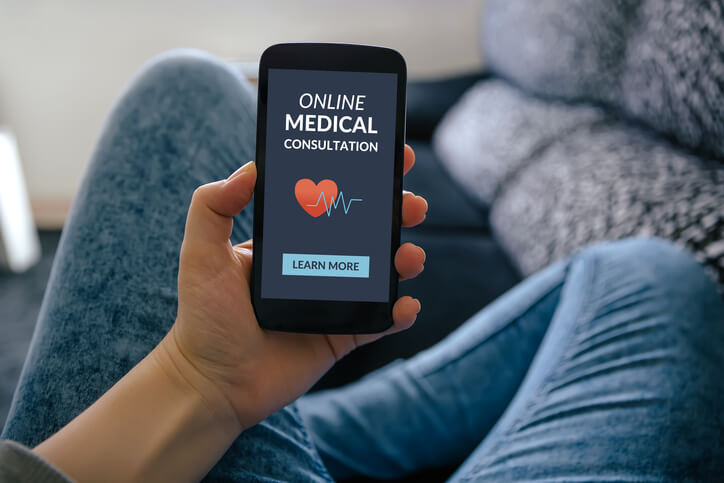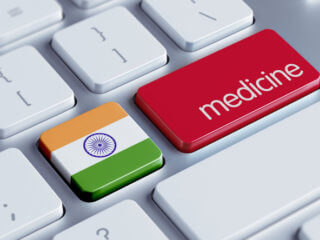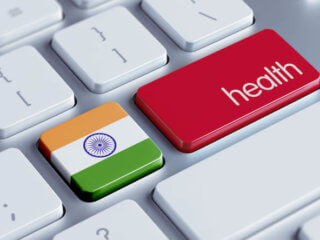Global digital health market growth is immensely driven by remote patient monitoring services to administer illnesses from a remote location. Increasing frequency of diseases such as cancer, cardiovascular, and diabetes should push the acceptance of these services. The health care industry would see a substantial rise in elderly population helping from remote patient monitoring services.
The German population above 60 years old is predicted to increase from 27% to 39%, the overall population is likely to fall from 82 Mill to 74 Mill by 2050, and which will put enormous pressure on organizations. Moreover, researchers projected that the German economy would lose 5-6 Million employees in the next 15-20 years which specifies the decline of the German economy, compared to UK and France, and other European Nations (Financial Times, 2015).
Besides Japan and the US, Germany is by far the primary health care market with an11.1% share of GDP. Germany digital health care industry held over 5.4 Billion USD in 2015 and likely to touch 40 Billion USD by 2024.
Increasing smart phone penetration, technological innovation, state usage of eHealth cards and promising regulations regarding e-health provide a lift to digital health and wellness industry.
What is digital health?
The wide-ranging space of digital health includes categories such as wearable devices, mobile health, health information technology (IT), telehealth and telemedicine, and tailored medicine.
Healthcare providers and other sponsors are utilizing digital health in their efforts to:
- Decrease inefficiencies,
- Reduce costs,
- Improve access,
- Increase quality, and,
- Make medicine more customized for patients.
Digital health industry modernizations together with the incorporation of cloud-based technology into digital health systems and introduction of software’s like predictive analysis, care management, and practice management software should aid as a high-power growth driver.
The digital health systems market share was over 32 Billion USD in 2015 with more than 130 Billion USD by 2024. Some of the notable start-ups include mySugr, Validic, CareDox, Augmedix, and Livongo Health. Also, the market received 4.7 Billion in 2014 with 670 deals through venture capitalist funding followed by over 4.6 Billion USD with 574 deals in 2015.
| Recommended for you | |
| How to raise funding for your digital health startup in Germany? | |
| 60 incubators in Germany to launch your digital health startup | |
| India-Germany collaboration |
What technologies and industries are part of digital health?
Digital health care opportunities are abounding, and 2017 brings more developments accomplishing the mainstream. The break-settle model of medicine is now being swapped with the predict-&-prevent model of medicine that integrates new technology with analysis and addresses the root of future issues by inspiring lifestyle and wellness changes and preventative practices.
Some of the innovative and cutting edge technologies made tremendous progress in the health care industry.
Telehealth technology empowers the remote diagnoses and assessment of patients notwithstanding the ability to remote detection of variations in the medical condition of the patient at home so that the medications or the therapy can be adjusted likewise. It also permits for e-prescribe medications and remotely recommended medications. Incorporated in telehealth are wellbeing education services, LTC Monitoring for remote checking of vital signs, Blood pressure or ECG and remote patient-doctor consultation. The telemedicine market is anticipated to touch 9.35 Billion USD by 2021 against 2.78 Billion USD in 2016, at a CAGR of 27.5%.
Video–consultation is a particular type of telemedicine that uses technology to provide real-time audio and visual patient assessment remotely.
Telecare is the term that identifies technologies that empower patients to keep up their independence and safety while staying in their homes. This innovative technology incorporates medical alert systems, mobile monitoring devices, and smartphones.
mHealth is a small form of mobile health. It is used for the practice of public health and medicine supported by mobile smart devices. The figure does exclude patients that use monitoring devices connected to a computer or cell phone.
Wearables sensors
Under mHealth sector, Wearable Tech was one of the primary areas in which digitization was used in health care. For instance, heart monitors, Glucose Meter, Pulse Oximeter, Sleep Apnea Monitors, Neurological Monitors, and Pedometers have been around for some time, letting people track the functions of their bodies and encourage themselves for behavioral changes.
Medical Apps and Fitness Apps are also driving the technological innovation under mHealth.mHealth industry may witness growth more than 35%, to reach 200 billion USD by 2024.
Others
Health Analytics evolving segment in a digital health system that assists reduce health care costs, mis-diagnosis, and provide predictable and robust data to care team. Health analytics market size was over USD 4 billion in 2015 and ought to see 25.9% growth over the forecast timeline.
Electronic Health Records (EHR) refers to the organized collection of population and patient electronically stored health information in a digital format. EHR systems are intended to store data precisely and to capture the condition of a patient over time. EHR (Electronic medical records) credited to more over 60% of worldwide digital health market share in 2015.
E-prescribing systems are generating and transmitting a medical prescription electronically, swapping the place of paper or faxed orders. E-prescribing aims to connect the health care providers to allow informed health care decision making.
What are the growth prospects of digital health market?
Digital health firms in the genomics sector received more venture funding than any other sector and held by many high-profile deals including Human Longevity ($220M), Seven Bridges Genomics ($45M), Color Genomics ($45M), Pathway Genomics ($40M), and Emulate ($28M).
The big data and analytics category continued its rise in 2016, reaching $341M over 22 deals. The bioensing wearables category had another significant jump and came in 3rd for most funding, even though it’s down by 32% from 2015. Telemedicine, population health management, and digital medical devices all returned on the top categories list.
(Source: https://rockhealth.com/reports/2016-year-end-funding-report-a-reality-check-for-digital-health/)
What is their broad market share?
Global digital health market size will touch379BillUSD by 2024, with over 25% growth from 2016-2024. Large corporations, small players, and start-ups are joining the industry run. The major industry participants will grasp maximum digital health market share due to brand recognition, strong financial muscle, and excellent after sales service. The major players include Qualcomm, McKesson Corporation, LifeWatch, AT & T, and Philips Healthcare.
What is the overall market growth in Germany?
Digital health is a vast subject in Germany. In Germany alone, the sector is expected to generate sales of €400 Million in 2017. Germany digital health care industry had over 30% of local revenue share and expected to touch 40 Billion USD by 2025.
Robust technological innovation like increasing smart phone penetration, public usage of eHealth cards and promising regulations concerning e-health provide a lift to digital health and wellness industry.
How much funding is flowing in this industry?
Many organizations were funded in 2016 (up by 8%), the total amount of capital for the year reached $4.2B, down 8% YoY. It might look like digital health sector’s growth is lessening, but it’s significant that companies still doubled the number of investments in just3 years. Flatiron Health, HealthLine, and Jawbone grabbed the significant deals of the year, which all acknowledged their latest rounds in the 1st month of the year.
(Source: https://rockhealth.com/reports/2016-year-end-funding-report-a-reality-check-for-digital-health/)
What’s prognosis for next ten years?
Health care companies should constantly add new services to keep patient consideration and build value. Once patients are aware of the general concept of digital service delivery, organizations can begin offering more sophisticated and high-value services, such as mobile health records or integrated health care apps.
We believe the health care industry is on the tip of a 3rd wave of IT acceptance, and now is the time for all health care firms to go all in on digital strategies. Understanding what patients want and how can we help make way for future development is the key to success of a digital health startup.
Image credit: www.istockphoto.com

















